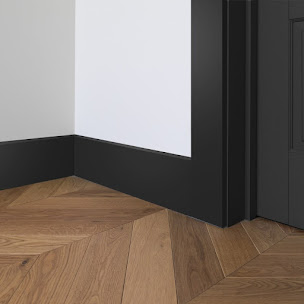Top Features to Look for When Buying Rubber Strips for Home Use
In home renovations, a rubber strip can serve many purposes. Not only do they aid in gap sealing, but they also help with sound muffling and dust and water blockage. Furthermore, it also assists in gap fences. Depending on your need, strips are made from various materials like adhesive or neoprene Rubber Strips. With the right information regarding features and details, one can save a lot of time and money.
Material Type
The flexibility, strength, and resistance the rubber strip has to elements highly depend on the material used to make it.
Neoprene rubber strips: These rubber strips function well outdoors and in maritime environments. They are also resistant to oil and heat, which makes them suitable for automotive and industrial use.
EPDM Rubber: As a weather seal, EPDM is resistant to UV rays and ozone. It works great for windows and doors.
Silicone Rubber: Flexible and heat resistant, it can be used at high temperatures.
Natural Rubber: Biodegradable offers the best tensile strength but isn’t weather or oil resistant.
The right material differs from project to project. Neoprene or EPDM are generally good enough for sealing things inside. Neoprene or silicone are preferable choices for more demanding settings.
Adhesive Backing
For do-it-yourself tasks that require quick installation, adhesive rubber strips are unrivaled. Their adhesive backing eliminates the use of extra tools or fasteners. While selecting rubber adhesive strips, consider:
Good bond: Their adhesive should be meant for the surface it will be placed on, like metal, wood, glass, or plastic.
Weatherproof: If used outdoors, make sure the glue can withstand changes in temperature and moisture.
No curling: Good seal rubber strips should be able to be applied without curling or slipping into the frame.
For blocking windows or doors from opening without much hassle, these adhesive strips do the job best.
Thickness and Width
Due to increased demand over the years, rubber strips of all sizes are now available. Thin strips make fitting into tiny spaces easier, while thick strips help in impact absorption.
Thin strips: Best used for closing small holes, insulation, and soundproofing.
Medium thickness: Door and window weather sealing.
Thick strips: Ideal for closing gaps in the garages.
Flexibility and Compression Set
A good Rubber Seal Strip should have enough flex so that it can be compressed as it gets snugly fitted against uneven surfaces but also retain its shape over time. How a substance that has been pressed unduly will retrieves its former thickness is known as the compression set.
Low compression set: Effective over the duration which is also handy useful when used for rubber seals and the edging strips.
High flexibility: Accommodates usage on cylindrical surfaces like car doors and the rounded windows.
Temperature and Weather Resistance
When considering rubber strips that will be used in environments with extreme temperatures or outdoor elements, choosing the right materials becomes of utmost importance.
Neoprene rubber strips and EPDM rubber are appropriate for high outdoor temperatures.
Strips that will be intensely exposed to the sun require UV Protection: A necessity to avert breaking and deterioration.
Moisture resistance: Very important for use within bathrooms, kitchens, and outdoors.
Changing climatic conditions makes Rubber strips UK weather resistant materials an intelligent investment.
Designing for Application
Different applications require different tailored types of rubber strips that can be individually designed.
Rubber edging strips: Used to protect and cover unsightly sharp edges.
Rubber seal strips: Used to seal doors, windows, or panels against the intrusion of air, dust, or water.
Vibration-dampening strips: Aid in the reduction of noise or the protection of surfaces from the impact.
When deciding which strip to use, it is best to tailor it to the specific need for optimal results and service life.
Satisfaction Guarantee & Optimal Finish
Choosing the right Neoprene Rubber Strips for the furniture or door edges' apron will make a world of a difference. Clients that wish for attention to detail will appreciate smooth, vibrant surfaces, while those who want effortless elegance will opt for dryer hues.
Matte black finish: Most modern surfaces blend seamlessly with a professional look.
Textured or smooth surfaces: These are depending on tactile and visual needs for appeal.




Comments
Post a Comment